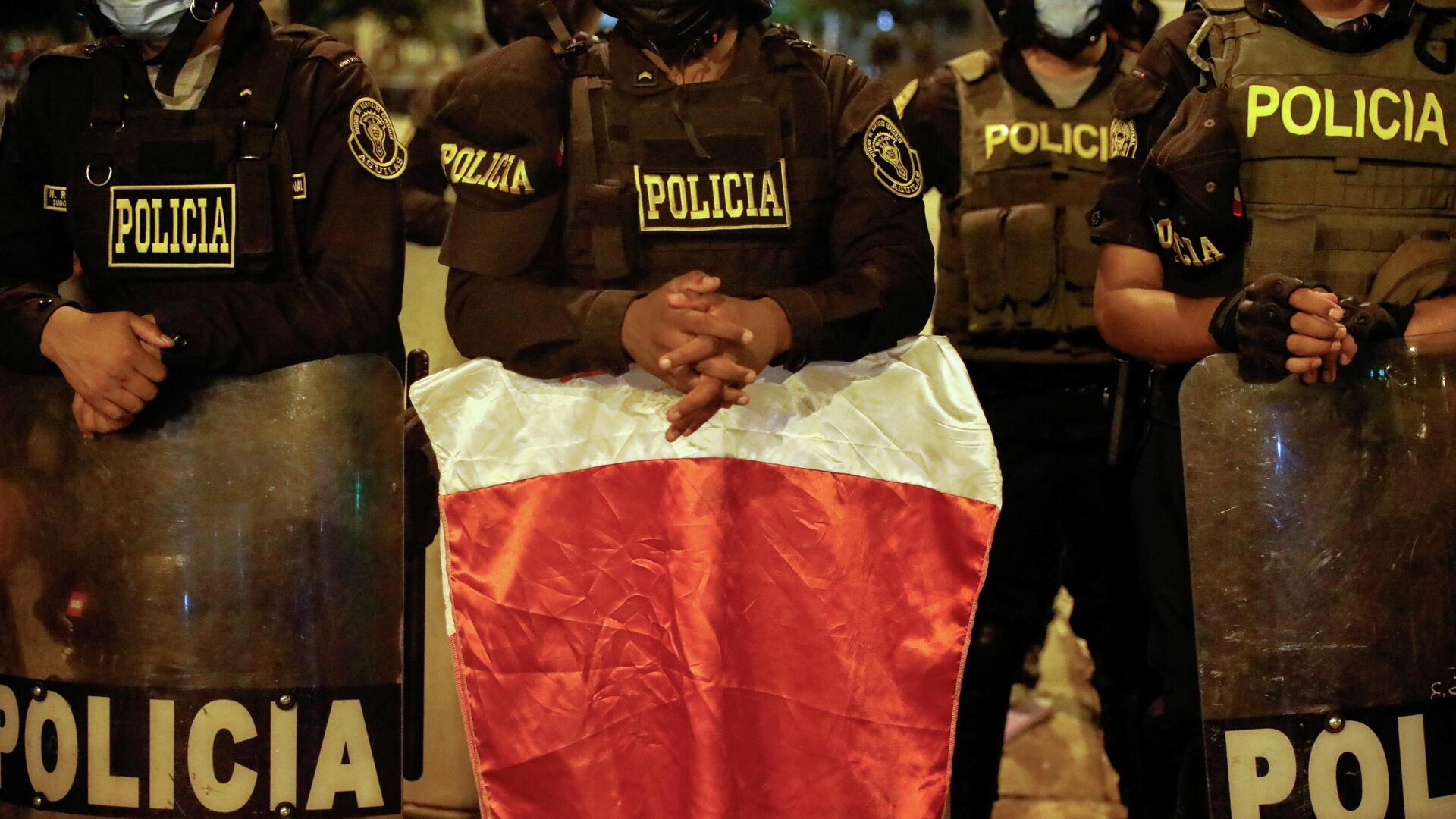Peru Declares Month-Long State of Emergency on Highways as Protests Remain Violent
02:53 GMT 08.04.2022 (Updated: 22:36 GMT 08.04.2022)

© REUTERS / ALESSANDRO CINQUE
Subscribe
The political crisis facing Pedro Castillo intensified this week as powerful politicians, publications, and private interests appear to be seeking the novice president’s ouster.
Peru announced a month-long state of emergency throughout the country’s highway system in response to protests that have continued to turn violent even after the curfew imposed Tuesday by the embattled government of President Pedro Castillo was lifted.
In an official notice, the Peruvian government explained the state of emergency was necessary to “reestablish and preserve the internal order, as well as preserve the constitutional rights of the population.”
On Wednesday, one person reportedly died and fifteen were injured–including twelve officers and three civilians–as Peruvian police fought to open a road seized by demonstrators in the Ica region. As many as nine major roadways continue to be affected by blockades.
Tensions have simmered in Peruvian cities this week as protesters affiliated with transportation unions demanded the government do more to offset the recent rise in gas prices which has accompanied Western efforts to ban Russian energy from global markets. After a meeting with opposition lawmakers Tuesday, Castillo told reporters that while “Peru is not going through a good moment… we have to solve it with the powers of the state.”
Castillo has faced numerous calls to step down from members of the opposition and some of Peru’s biggest newspapers. He’s been heavily criticized for imposing a curfew amid protests which the Chamber of Commerce of Lima estimated were costing one billion Soles ($270 million US) every day in the capital city alone. Demonstrators who defied Tuesday’s curfew order reportedly ransacked the Peruvian Judiciary and made off with sensitive files.
Some observers say oligarchic factions which fiercely resisted Castillo presidential’s victory last year are co-opting the protest movement.
“Two parallel types of protest are taking place in the country: on the one hand, a group that since June 2021 has not accepted its defeat and in its anti-democratic fervor only seeks to sabotage, and, on the other, citizens who want the president to fulfill his campaign promises,” wrote one Twitter user in a post that went viral on the social media giant Tuesday.
Se están dando en paralelo dos tipos de protesta en el país: por un lado un grupo que desde junio del 2021 no asume su derrota y en su afán antidemocratico solo buscan sabotear y, por otro, ciudadanos que quieren que el presidente cumpla sus promesas de campaña pic.twitter.com/Kfpjufd8nU
— Fullmetal Arguedist (@rocamadeus) April 5, 2022
Vladimir Cerron, the founder of the Peru Libre party from which President Castillo hails, reported Saturday that “delinquents” had vandalized his home as protests descended into violence. Within days, cities across the country were hit hard by a wave of looting
#ATENCIÓN Ataque al minimarket ubicado en la carretera panamericana sur, kilómetro 300. pic.twitter.com/z0d8rB2Y9c
— Revista Caretas (@Caretas) April 4, 2022
The country’s right-wing opposition has been seeking to depose President Castillo since even before the former teacher took office. Last June, failed presidential candidate Keiko Fujimori used manufactured claims of election fraud to contest his victory for weeks. That same month, Vladimiro Montesinos, the notorious CIA collaborator currently jailed for human rights violations (who served as spymaster for Keiko’s father, former Peruvian dictator Alberto Fujimori) was secretly recorded apparently offering bribes to secure the presidency for her illegally.
In late March, Castillo narrowly survived the second attempt to impeach him in under a year. The Peruvian president has been forced to reshuffle his cabinet four times in the past six months and has faced seemingly ceaseless calls to remove a number of his high-profile appointees. While his moves to request the resignation of his first foreign minister, Hector Bejar, and his first prime minister, Guido Bellido, were apparently intended to mollify the right-wing, it seems such moves have only emboldened his political opponents.
In February, after Peru’s Attorney General’s office announced it was opening an investigation into Castillo for alleged corruption, the president accused the office of participation in “a plot to destabilize the government.”
"The Peruvian people and the international community are aware of the anti-democratic and coup-mongering will of this minority sector," he said at the time, before calling on Peruvians to "defend democracy and… a government that is borne of the people."
